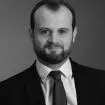The High Court of England and Wales has issued a judgment on the patentability of AI both in respect of its exclusion from patentable subject matter and in relation to whether the AI in question produced a substantial technical contribution.
In Emotional Perception AI Ltd v Comptroller-General of Patents, Designs, and Trade Marks [2023] EWHC 2948 (Ch) ("Emotional Perception"), Sir Anthony Mann (sitting in retirement) held that a patent application for an artificial neural network ("ANN") did not invoke the statutory exclusion from patentability which applies to computer programs (as such) under s.1(2)(c) Patents Act 1977, as no computer program was claimed (the ANN involved not being such) and if that was wrong, the system's method of selection through the application of "technical criteria which the system has worked out for itself" satisfied the requirement for a technical contribution for the purposes of escaping that subject matter exclusion in any case.
In response, the UK IPO has temporarily suspended its guidance on the examination of AI inventions while it considers the impact of this decision and has issued a practice update specifically relating to the examination of ANNs. The UK IPO has further been granted leave to appeal the decision to the Court of Appeal.
The Decision in Emotional Perception
Background
The case concerned a patent application for a system for recommending media files to end users by passing music tracks through a trained ANN. This ANN was trained in a particular way to identify similar tracks by taking into account both natural language descriptions of a music file and its physical properties based on human perceptions and descriptions and used machine learning to correct its own internal workings without human input. The advantage of the patent was said to be its ability to suggest similar music in terms of human perception and emotion, irrespective of the genre of music and the apparently similar tastes of other humans and to arrive at such suggestions by passing music through a trained ANN which performed the categorisation.
The proceedings were brought as an appeal against a decision of 22 June 2002, in which a UK IPO Hearing Officer refused to grant the proposed patent on the basis that the claimed invention constituted subject-matter excluded from patentability under s.1(2)(c) of the Patents Act 1977 (the "Patents Act"), which excludes from patentability "a program for a computer ... only to the extent that a patent or application for a patent relates to that thing as such".
Decision
The main issue was whether the use of an aspect of artificial intelligence (the ANN) fell within the exclusion in the Patents Act relating to computer programs. The application had been found to be excluded by the Comptroller of Patents whose decision was being appealed in this case.
Sir Anthony Mann first considered whether the ANN was a "program for a computer" within the meaning of the s.1(2)(c) of the Patents Act. In doing so, Sir Anthony considered that the ANN could be classified into two types: the "hardware" ANN, which is described as a "physical box with electronics in it" and the "software" or "emulated" ANN, whereby a "conventional computer runs a piece of software which enables the computer to emulate the hardware ANN as if it were a hardware ANN". It appeared to be accepted by the parties that a hardware ANN would not fall under the exclusion in s.1(2)(c) of the Patents Act, and Sir Anthony commented that this was justified on the basis that the hardware was not implementing a series of instructions pre-ordained by a human, but was operating according to something that it has learned itself. He found that the same reasoning applied to the "emulated" ANN since it was not implementing code given to it by a human, and was "in substance, operating at a different level (albeit metaphorically) from the underlying software on the computer". Sir Anthony therefore concluded that while the program used at the training stage of the ANN could be a program for a computer, the emulated ANN did not fall within the exclusion.
Training stage involving a computer program
While holding that an emulated ANN was not a program for a computer, Sir Anthony commented that programming activity was involved in the training phase, and so "the only remaining candidate computer program is therefore the program which achieves, or initiates, the training". However, he held that the actual training program was only a subsidiary part of the claim and was not what was claimed in the invention. On the basis that the claims went beyond that, the exclusion was not invoked.
Technical contribution
In case he was wrong on this conclusion, Sir Anthony then went on to find that the invention provided a technical contribution which would allow an invention that might otherwise have been excluded to be patentable; in his words, "a technical effect which prevents the exclusion applying". Following the line of cases on computer implemented inventions and technical contribution, he considered steps 3 and 4 of the Aerotel steps, which assess whether the contribution falls solely within the excluded subject matter and whether the contribution is technical in nature. He held that the system's method of selection and the output of files that would not otherwise be selected through the application of "technical criteria which the system has worked out for itself" constituted a technical effect outside the computer for these purposes, and when coupled with the purpose and method of selection satisfied the requirement of technical effect in order to escape the subject matter exclusion of s.1(2)(c) of the Patents Act.
Sir Anthony also considered an alternative approach to the extent that the computer program was either the training program or the overall training activity. In this case, he considered that the resulting ANN, and particularly a trained hardware ANN, could be regarded as an external technical effect which prevented the exclusion from applying to any prior computer program. Again, he concluded that there was no difference between hardware and emulated ANNs for these purposes.
Further exclusions
Sir Anthony also explored another possible exclusion of the invention as a "mathematical method" (s.1(2)(a) Patents Act), which had been raised in post-hearing submissions, but this was rejected on a procedural issue and the judge considered it not to be in play in the appeal and did not consider it further.
UK IPO's response
The UK IPO has responded by temporarily suspending its guidance on the examination of AI inventions and issuing specific guidance that "patent examiners should not object to inventions involving ANNs under the "program for a computer" exclusion." In what may signal a shift in approach to the patentability of AI more generally, it has also indicated that the Manual of Patent Practice and the Office's guidelines for examining patent applications relating to artificial intelligence (AI) inventions will be updated in due course to reflect the Emotional Perception judgment.
Further, on 15 December 2023, the UK IPO confirmed that they had been given leave to appeal the decision to the Court of Appeal.
The content of this article is intended to provide a general guide to the subject matter. Specialist advice should be sought about your specific circumstances.


